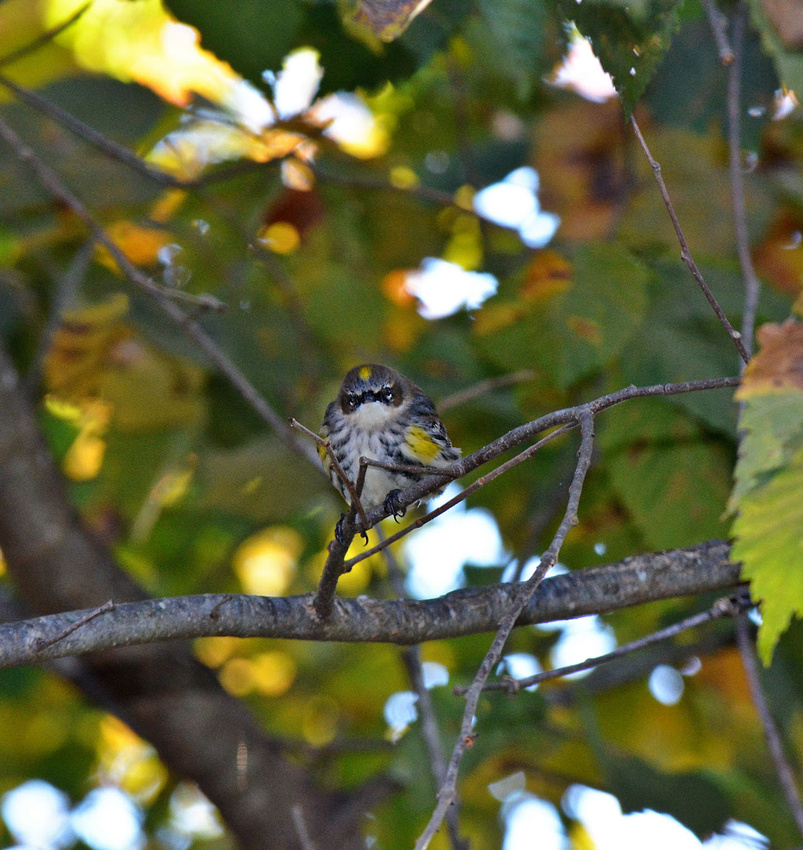The butter-butts are back
 Butterbutt, Millpond
Butterbutt, Millpond
Bird names are occasionally changed to reflect new scientific knowledge, and in the case of what used to be called the Eastern Myrtle Warbler, a diminutive bird with a yellow patch on its hindquarters, along with distinctive yellow shoulder patches and a yellow crown, the American Ornithologists' Union—the arbiter of names—decided to lump four closely related species into one, and thus was born the Yellow-rumped Warbler. That's certainly descriptive enough, but I prefer the non-approved, but widely used, term of endearment for Setophaga coronata: the "butter-butt." I also really liked the old name, since "Myrtle" is another designation for the warbler's winter food, the Wax Myrtle, or, as it's known around our shores, the Bayberry, whose wax-covered fruits are the beginnings of wonderfully scented candles. The butter-butt, unlike other warbler species, can switch from insect-eating in the warm weather to a diet of fruits and berries in the winter, so it can live in our area. The feisty and hardy birds are now migrating down from the northern nurseries to set up shop in region, and I hope, by whatever name, the butter-butts are finding plenty to eat.